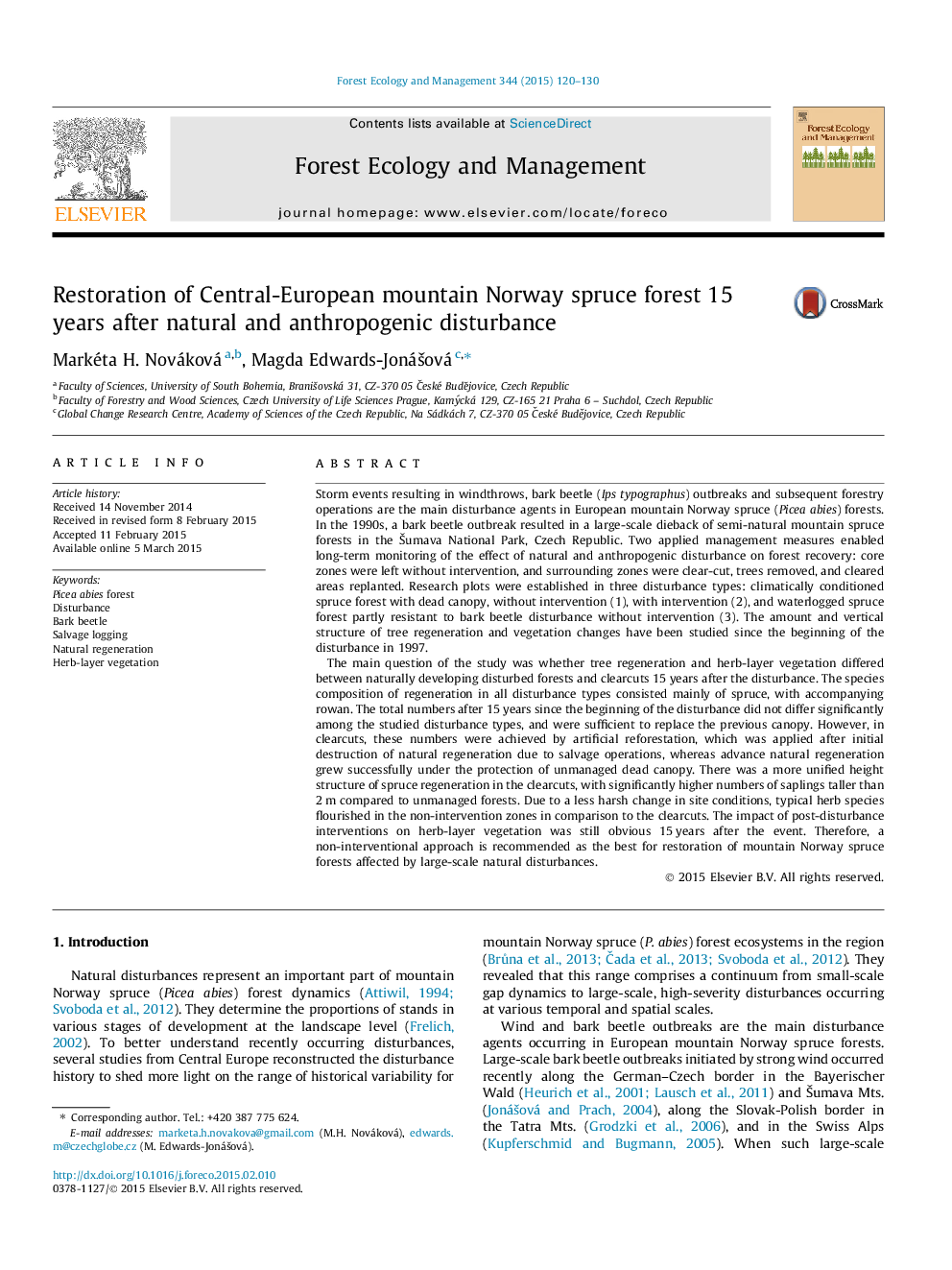| کد مقاله | کد نشریه | سال انتشار | مقاله انگلیسی | نسخه تمام متن |
|---|---|---|---|---|
| 86322 | 159178 | 2015 | 11 صفحه PDF | دانلود رایگان |
• Mountain spruce forests recover successfully after bark-beetle outbreak.
• Natural disturbance had no negative impact on natural regeneration.
• Negative effect of post-disturbance intervention was still apparent after 15 years.
• Non-interventional approach is the best for restoration of spruce mountain forests.
Storm events resulting in windthrows, bark beetle (Ips typographus) outbreaks and subsequent forestry operations are the main disturbance agents in European mountain Norway spruce (Picea abies) forests. In the 1990s, a bark beetle outbreak resulted in a large-scale dieback of semi-natural mountain spruce forests in the Šumava National Park, Czech Republic. Two applied management measures enabled long-term monitoring of the effect of natural and anthropogenic disturbance on forest recovery: core zones were left without intervention, and surrounding zones were clear-cut, trees removed, and cleared areas replanted. Research plots were established in three disturbance types: climatically conditioned spruce forest with dead canopy, without intervention (1), with intervention (2), and waterlogged spruce forest partly resistant to bark beetle disturbance without intervention (3). The amount and vertical structure of tree regeneration and vegetation changes have been studied since the beginning of the disturbance in 1997.The main question of the study was whether tree regeneration and herb-layer vegetation differed between naturally developing disturbed forests and clearcuts 15 years after the disturbance. The species composition of regeneration in all disturbance types consisted mainly of spruce, with accompanying rowan. The total numbers after 15 years since the beginning of the disturbance did not differ significantly among the studied disturbance types, and were sufficient to replace the previous canopy. However, in clearcuts, these numbers were achieved by artificial reforestation, which was applied after initial destruction of natural regeneration due to salvage operations, whereas advance natural regeneration grew successfully under the protection of unmanaged dead canopy. There was a more unified height structure of spruce regeneration in the clearcuts, with significantly higher numbers of saplings taller than 2 m compared to unmanaged forests. Due to a less harsh change in site conditions, typical herb species flourished in the non-intervention zones in comparison to the clearcuts. The impact of post-disturbance interventions on herb-layer vegetation was still obvious 15 years after the event. Therefore, a non-interventional approach is recommended as the best for restoration of mountain Norway spruce forests affected by large-scale natural disturbances.
Journal: Forest Ecology and Management - Volume 344, 15 May 2015, Pages 120–130
